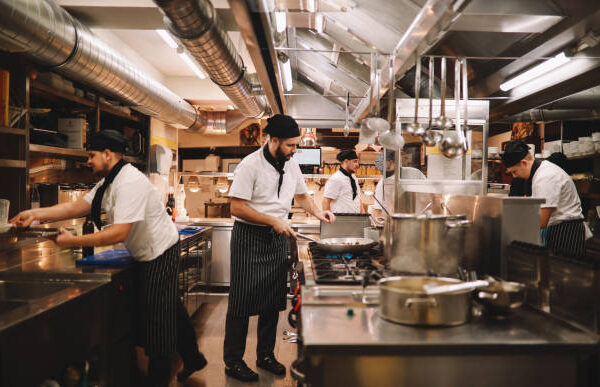When it comes to opening or renovating a restaurant, many owners and designers face the challenge of working with a limited space. Small spaces can seem like a limitation, but they also present a unique opportunity for creativity and innovation. With the right design strategy and approach, even the most compact restaurant can become a functional, stylish, and highly efficient space that wows customers.
Embracing the Challenge
At first glance, small spaces may seem like a daunting hurdle for restaurant owners who dream of creating a bustling, vibrant dining atmosphere. It’s easy to assume that a larger space equals more room for creativity, a wider range of seating options, and a bigger kitchen. However, a smaller restaurant space doesn’t mean your design vision needs to shrink. In fact, it can spark even more creativity and innovation.
Small restaurant spaces present an opportunity to focus on efficiency, maximizing every square inch to create a comfortable and functional environment. With careful planning, small can feel cozy, intimate, and even luxurious. The trick is to make smart design decisions that highlight the best aspects of the space and minimize any limitations. Small doesn’t have to mean cramped or uncomfortable. Instead, it can evoke a sense of intimacy and warmth, which is often a coveted atmosphere in the restaurant industry.
Maximizing Floor Plan Efficiency
The first step in renovating a small restaurant space is to carefully analyze the floor plan and determine how to make the most of it. Floor plans are crucial in determining how the space flows, how customers and staff move throughout the restaurant, and how to arrange seating and dining areas efficiently. In a small restaurant, every inch counts, so optimizing the layout is key.
One effective way to maximize floor plan efficiency is by utilizing modular furniture. This type of furniture can be easily rearranged to suit different needs or events. Whether you have booth seating that can accommodate large groups or tables that can be moved to create a more intimate setting for couples, modular furniture provides flexibility while maintaining a sleek and cohesive look.
Another option to maximize the floor plan is to focus on multi-functional elements. For example, a bar can serve as both a seating area and a place for food prep. A communal table can foster a sense of community while also allowing for efficient use of space. The goal is to make every piece of furniture or design element work overtime, serving both functional and aesthetic purposes.
Creating Visual Space with Light and Color
One of the most effective ways to make a small restaurant feel bigger is by playing with light and color. Lighting has an incredible power to transform the atmosphere of any space, and in a small restaurant, it can make all the difference. Bright, well-placed lighting can create the illusion of more space, making a room feel open and airy.
For instance, strategically placed task lighting over tables or accent lights highlighting certain areas of the restaurant can brighten up a space and provide the illusion of greater depth. On the other hand, softer, warmer lighting can add a cozy, inviting feel to the restaurant, creating an intimate experience for diners.
When it comes to color, lighter shades tend to open up a space. White, soft neutrals, pastels, and light greys reflect light, making the space feel more expansive. However, that doesn’t mean you have to abandon bold or dark colors altogether. Incorporating accent walls, dark-colored furniture, or deep-colored textiles in small doses can create visual interest and depth. These pops of color can serve as focal points without overwhelming the space.
In addition to color, mirrors are another powerful design tool that can enhance the feeling of space. Mirrors reflect light, making a small space appear larger and more dynamic. Consider using mirrored surfaces for tables, backsplashes, or even artwork to enhance the overall visual appeal of your restaurant.
Strategic Use of Vertical Space
When working with limited square footage, it’s crucial to think vertically. Rather than only focusing on the floor plan, consider the vertical space in your restaurant. By utilizing walls for storage, decor, and even seating, you can free up valuable floor space for customers and staff.
Vertical storage is a great way to declutter a small restaurant. Wall-mounted shelves or hanging racks can store items like glassware, dishware, or even herbs and plants, freeing up counter and floor space. Wall-mounted fixtures can also serve a functional role, like coat hooks or small seating areas that maximize the restaurant’s layout without taking up precious floor space.
Additionally, wall art or vertical garden designs can enhance the aesthetic appeal of the space without occupying floor space. Hanging plants, for instance, can add an organic touch to the restaurant while contributing to the overall ambiance. Vertical elements like large murals or artwork can draw the eye upward, helping customers feel less constrained by the size of the space.
Utilizing Open-Concept Design
In small restaurant renovations, embracing an open-concept design can help to improve the flow and openness of the space. This layout removes unnecessary walls or partitions, creating a seamless transition between dining areas, the bar, and the kitchen. An open-concept design encourages movement and makes the space feel more spacious.
For example, if the restaurant has a small kitchen, placing it in an open format where guests can see the chefs in action can be a great way to enhance the dining experience. It also serves a functional purpose by allowing guests to feel connected to the food preparation process. The idea of having the kitchen “on display” can turn it into an engaging experience that adds to the atmosphere, especially in smaller spaces where every detail counts.
An open-concept design is also ideal for creating an interactive space that encourages socialization. Consider communal seating options like large tables or counters that bring diners together. The key is to create a comfortable, fluid environment where customers don’t feel restricted or isolated by the design of the space.
Creating Focal Points
Even in a small restaurant, it’s essential to establish focal points that draw attention and create a sense of purpose within the space. Focal points help break up a room and give it structure, while also making it visually engaging. In a small space, these focal points can be even more important as they guide the eye and help create a cohesive atmosphere.
A great way to establish focal points is by using statement furniture or decor pieces. For example, a large piece of art, an eye-catching chandelier, or a unique centerpiece can serve as a striking focal point that draws attention without overwhelming the space. A well-placed sculpture or a design feature like an open kitchen or bar can also become a focal point, sparking conversation and providing visual interest.
When choosing focal points, it’s important to keep the scale of the space in mind. Too many large elements can crowd the area, but a few well-chosen pieces can create a balanced and impactful design. The goal is to make sure that each element in the space has a purpose, whether it’s to add style, function, or both.
Designing for Flow and Comfort
In a small restaurant, comfort and flow are essential. If the space feels cramped or difficult to navigate, it will negatively impact the customer experience. Creating a flow that works for both diners and staff is crucial for making the most out of the available space.
Consider how customers will move through the space, from entering the restaurant to being seated, ordering, and eating. Avoid placing furniture in areas where it might block pathways or impede movement. Additionally, ensure there are clear, easy-to-navigate walkways between tables, the kitchen, and other essential areas.
In terms of seating, balance is key. While maximizing the number of seats in a small space is important, it should never come at the cost of comfort. Offering various seating options, such as booths, tables for two, and bar seating, can accommodate different types of groups without feeling too crowded. Comfortable seating and well-spaced tables will ensure that diners have a pleasant experience, no matter how small the space.
Endless Opportunities
Renovating a small restaurant space presents its own set of challenges, but with the right approach, it can also open up endless opportunities for creativity and innovation. By focusing on maximizing floor plan efficiency, utilizing vertical space, embracing light and color, and designing with flow and comfort in mind, you can transform a compact space into a stunning and highly functional restaurant.
Small restaurant spaces don’t have to feel cramped or restrictive. Instead, they can feel cozy, intimate, and full of character. With a thoughtful design, your small restaurant can make a big impact, offering customers a unique and memorable dining experience. Through careful planning and smart design choices, you can turn any small space into a space that feels larger than life.



